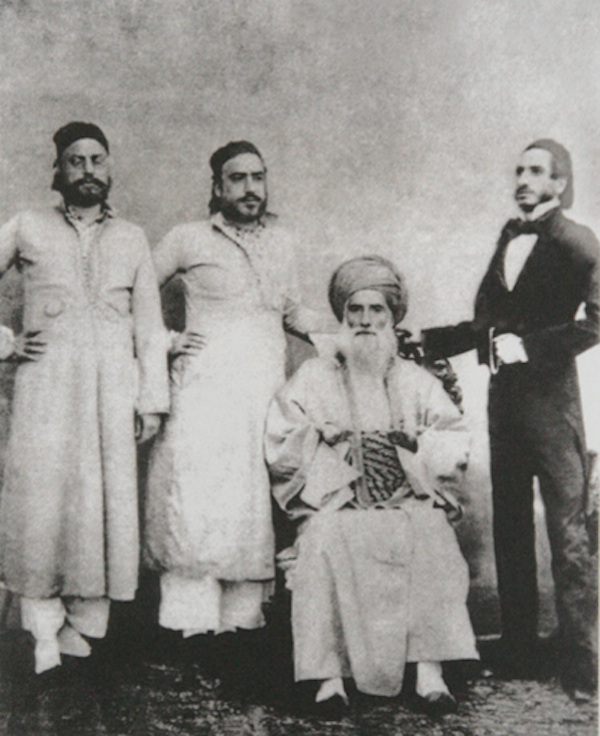Daily Stormer
March 16, 2014
Of course Jews were responsible for the Opium Wars with China.
Drugs are a horrible and dehumanizing thing, and like all filthy things, it takes only a quick look to find a Jew behind it.
What is interesting is to look at the parallel of how the Jews are using drugs now – one of them being heroin (opium), coincidentally – to subdue the people now in the West, as they drive us toward oblivion.

From Wikipedia:
Sassoon was born in Baghdad, where his father, Saleh Sassoon (1750-1830), was a wealthy businessman, chief treasurer to the pashas (the governors of Baghdad) from 1781 to 1817, and president (Nasi) of the city’s Jewish community.
The family were Iraqi Jews. His mother was Amam Gabbai. After a traditional education in the Hebrew language, Sassoon married Hannah in 1818. They had two sons and two daughters before she died in 1826. Two years later he married Farha Hyeem (who was born in 1812 and died in 1886). The pair had six sons and three daughters.
Following increasing persecution of Baghdad’s Jews by Dawud Pasha, the family moved to Bombay via Persia. Sassoon was in business in Bombay no later than 1832, originally acting as a middleman between British textile firms and Gulf commodity merchants, subsequently investing in valuable harbour properties. His major competitors were Parsis, whose profits were built on their domination of the Sino-Indian opium trade since the 1820s.
When the Treaty of Nanking opened up China to British traders, Sassoon developed his textile operations into a profitable triangular trade: Indian yarn and opium were carried to China, where he bought goods which were sold in Britain, from where he obtained Lancashire cotton products. He sent his son Elias David Sassoon to Canton, where he was the first Jewish trader (with 24 Parsi rivals). In 1845 David Sassoon & Sons opened an office in what would soon become Shanghai’s British concession, and it became the firm’s second hub of operations.
In 1844, he set up a branch in Hong Kong, and a year later, he set up his Shanghai branch on the Bund to cash in on the opium trade.
It was not until the 1860s that the Sassoons were able to lead the Baghdadi Jewish community in overtaking Parsi dominance. A particular opportunity was given by the American Civil War, during which turmoil American cotton exports from the South declined. Lancashire factories replaced American cotton imports with Sassoon’s Indian cotton.
Along with Parsi businessmen such as Jamshedji Jeejeebhoy, David Sassoon continued the trade with China and from the wealth earned there he started his own business of oil. His first mill was named E.D. Sassoon Mills and he became exceedingly prosperous. Later the Sassoons were the largest mill owners and were known as Badshah of the business community of Bombay. Overall there were 17 mills, each mill having around 15 to 20,000 workers. Later, David Sassoon also entered the cotton, fabrics and various other industries on a large scale.
David Sassoon, as an Orthodox Jew, continued his Jewish religious observances, observing the Jewish Sabbath throughout his busy life. He was also a member of the Legislative Assembly of the time. He built one of the largest and most beautiful synagogues of India, the Magen David synaguogue at Byculla, Bombay. He also built the Ohel David Synagogue of Pune. Today these are well known tourist attractions and form an important part of the cultural heritage of India. Various charity trusts were named after him and other members of his family, funded from his private income, which continue in existence today. David Sassoon one of the great people of Bombay who created so many monuments and educational institutions, building great buildings that have become the most prominent places of Bombay and Pune. He also constructed the Sassoon Dock at Colaba, one of the largest docks ever built in Bombay.
He lived with his family at Byculla’s Bungalow which was in fact actually a Palace named Shin Sangoo. This was later donated to the Parsi Trust and is today’s Massina Hospital. Nearby Rani Bagh was also the property of the Sassoons and was donated to the Mumbai Municipal Corporation for the construction of the Albert Museum, designed by the most prominent architect of the time. The interior is exactly like the Magen David synagogue of Mumbai and Ohel David synagoague of Pune. It also has the famous Victoria clock tower.
 Daily Stormer The Most Censored Publication in History
Daily Stormer The Most Censored Publication in History


